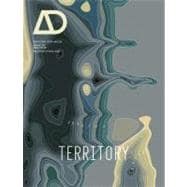
Note: Supplemental materials are not guaranteed with Rental or Used book purchases.
Purchase Benefits
What is included with this book?
Much of Gissen’s work examines concepts of nature in architecture, a topic that is becoming increasingly central to architectural thought and practice. His work resists the notion that nature is external to architecture and therefore something architecture can better emulate or mimic. In contrast, his work is formed around a concept of the ‘architectural production of nature’. For Gissen, nature is already laced with architectural historical representations whether we speak of the atmosphere that moves in and out of buildings or the verdant nature within contemporary cities. All of nature has been reworked – literally and conceptually – by the constructs of modern society, including architecture. He believes that what is needed is a new type of architecture and a new type of history that uncovers and projects this reality.
In addition to exploring these ideas in Territory, Gissen authored the book Subnature: Architecture’s Other Environments (Princeton Architectural Press, 2009), which examines those denigrated natures codified and examined within the history of architectural thought (dankness, debris, smoke or mud) from the 16th century to the present. He views the sub-natural as a type of nature laced with a specifically architectural presence and history. Among the contemporary projects examined in the book are those that revel in this historical aspect: Tom De Paor’s Irish Pavilion made of murky Irish bog mud (2002) or Jorge Otero-Pailos’ preservations of the pollution and dust on a factory’s walls (2008).
Finally, Gissen’s research into architecture and nature lead him to examine how such explorations might be the groundwork for new forms of experimental architectural historical practice. This is the subject of a website he authors (htcexperiments.org) and was the subject of his article in the Energies: New Material Boundaries issue of AD (May/June 2009). In this latter work, he examines how various historical practices from early modern history – such as architectural reconstructions of architectural environments or various institutional appropriations – might let loose new appearances of architectural history outside the text.
Gissen is based in the San Francisco Bay Area where he is an assistant professor and coordinator of the architectural history and theory curriculum at the California College of the Arts. He studied architecture at the University of Virginia, Yale and Columbia Universities, and completed his PhD at University College London under the direction of Matthew Gandy and Adrian Forty.
About the Guest-Editor (David Gissen).
Introduction
Territory: Architecture Beyond Environment (David Gissen).
Eat Me … Drink Me … (Sean Lally/WEATHERS).
The Tree Canopy as Blueprint (Mitchell Schwarzer).
The Ecological Facades of Patrick Blanc (Matthew Gandy).
Bugs, Bats and Animal Estates: The Architectural Territories of ‘Wild Beasts’ (Ben Campkin).
The Material Transformations of AMID (cero9) Social Oxygen Balloons (David Gissen).
It’s in Your Nature: I’m Lost in Paris (Javier Arbona).
Toxic Territories (David Gissen).
The Living: Surface Tensions (Jordan Geiger).
Amphibious Territories (Ila Berman).
The Aurora Project (Jason Kelly Johnson and Nataly Gattegno (Future Cities Lab)).
The Perils of Historical Geography: On a Pretended Lost Map to a Legendary Sunken Forest (Edward Eigen).
Local Code: Real Estates (Nicholas de Monchaux).
What Has Happened to Territory? (Antoine Picon).
Interior Eye.
Ashmolean Museum, Oxford (Howard Watson).
Building Profile.
Antwerp Central and Liège-Guillemins, Belgium (David Littlefield).
Practice Profile
ecoLogicStudio (Terri Peters).
Spiller’s Bits.
Fiddling While the World Burns (Neil Spiller).
Unit Factor.
Emergence and the Forms of Cities (Michael Weinstock).
Userscape.
Relational Interactive Architecture (Valentina Croci).
Yeang’s Eco-Files.
Green Footstep: A Tool for Evaluating a Building’s Life-Cycle Carbon Footprint and Informing Carbon Decisions During the Building Design Process (Michael Bendewald, Victor Olgyay (RMI) and Ken Yeang).
McLean’s Nuggets (Will McLean).
Site Lines.
MAXXI, Rome: Zaha Hadid Architects (Mark Garcia).
The New copy of this book will include any supplemental materials advertised. Please check the title of the book to determine if it should include any access cards, study guides, lab manuals, CDs, etc.
The Used, Rental and eBook copies of this book are not guaranteed to include any supplemental materials. Typically, only the book itself is included. This is true even if the title states it includes any access cards, study guides, lab manuals, CDs, etc.